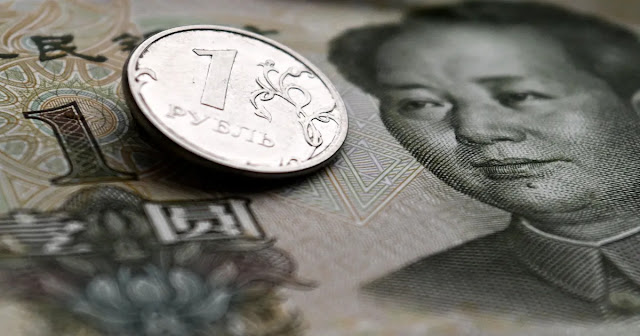 |
| Image: AI |
Payments for at least seven Russian oil cargoes to India have been held up due to the Indian government’s reluctance to use the Chinese yuan as a settlement currency, sources say.
The impasse over payment has not yet disrupted deliveries, with Russian firms like Rosneft continuing exports to India’s state-run refiners. But it highlights the complexities of financing Russia’s oil trade amid Western sanctions over the Ukraine invasion.
India emerged this year as the top buyer of Russian seaborne crude, purchasing discounted supplies as some Western nations shunned Moscow. But the new U.S.-EU price cap on Russian oil set at $60 per barrel has forced importers to explore alternative payment options beyond the U.S. dollar and euro.
Yuan Payments Raise Concerns in Delhi
According to two Indian finance ministry officials, New Delhi is not comfortable with the country’s refiners using the yuan to pay for Russian oil.
“It is not banned and if a private firm has yuan to settle its trade, the government will not stop it, but it will neither encourage nor facilitate such trade,” one official told Reuters.
As reported in July, Indian refiners had begun using yuan for some Russian oil settlements. But the government’s disapproval has held up payments totaling billions of dollars for at least seven recent cargoes to state-run refiners.
Some oil payments to two state refiners have been pending since late September, sources directly involved said.
It’s unclear if the government explicitly directed refiners to stop paying in yuan. But its reluctance is evident and leaves buyers scrambling for alternative currencies.
Extra Costs from Yuan Conversion
Most Russian oil bought by India is purchased from traders, with some volumes acquired directly from Russian producers.
Two refining sources said settling deals in yuan adds 2–3% in extra costs, as the rupee must first be exchanged into Hong Kong dollars and then yuan. Paying in Emirati dirhams is cheaper.
“The rupee to yuan conversion adds an extra layer,” one source explained.
State-run refiners Indian Oil Corp (IOC), Bharat Petroleum Corp (BPCL) and Hindustan Petroleum (HPCL) have all been asked by Russia to pay in yuan for recent orders, sources revealed.
Private Indian refiners continue settling most Russian oil deals in dirhams, despite using yuan for some purchases.
But Moscow seems reluctant to widely accept India’s rupee as payment due to trade imbalances favoring Russia. India proposed a rupee payment mechanism last year to promote trade in local currencies.
Geopolitical Concerns Around China
Some in India view dependence on the yuan to pay for Russian oil as ultimately benefiting China at a time when Sino-Indian relations remain fractious after a fatal 2020 border clash.
Using yuan remittances could also undermine Western sanctions targeting Moscow’s oil earnings.
But India’s state-owned refiners prefer the rupee option to pay for Russian crude. The firms have not yet responded to requests for comment on the payment issues.
Nor have the oil and finance ministries commented publicly on the yuan conundrum.
With billions in stalled payments, India must now negotiate acceptable currency terms to ensure smooth oil trade with Russia, its second largest supplier after Iraq.
The payment impasse highlights the pressure India faces balancing its thirst for discounted Russian oil with geopolitical realities and sanctions fallout.
Russia Remains Key Oil Source
Despite the complexities, India aims to continue importing significant volumes of Russian crude this year and beyond.
Rosneft, Gazprom and other Russian energy giants have not disrupted oil deliveries while payment terms remain in limbo.
Traders are also willing to use dirhams over yuan, which may offer India some reprieve.
But resolving the payments gridlock is crucial for ensuring Russian barrels keep flowing into India, especially with tight global supplies.
India’s Russian oil imports averaged 1.2 million barrels per day so far this year, over 20 times higher than 2021 levels. Russia surpassed Saudi Arabia in April to become India’s second largest crude source.
While U.S. officials have warned India against dependence on Moscow’s oil, affordable energy remains critical for New Delhi.
India will continue treading a fine line between Western interests and its own energy needs as the Russia-Ukraine war reshapes geopolitics.
Navigating sanctions and currencies will remain vital for cementing India’s place as a leading Russian oil customer.
For continued coverage on India’s role in global oil markets, please bookmark this page and subscribe to our energy newsletter.





















